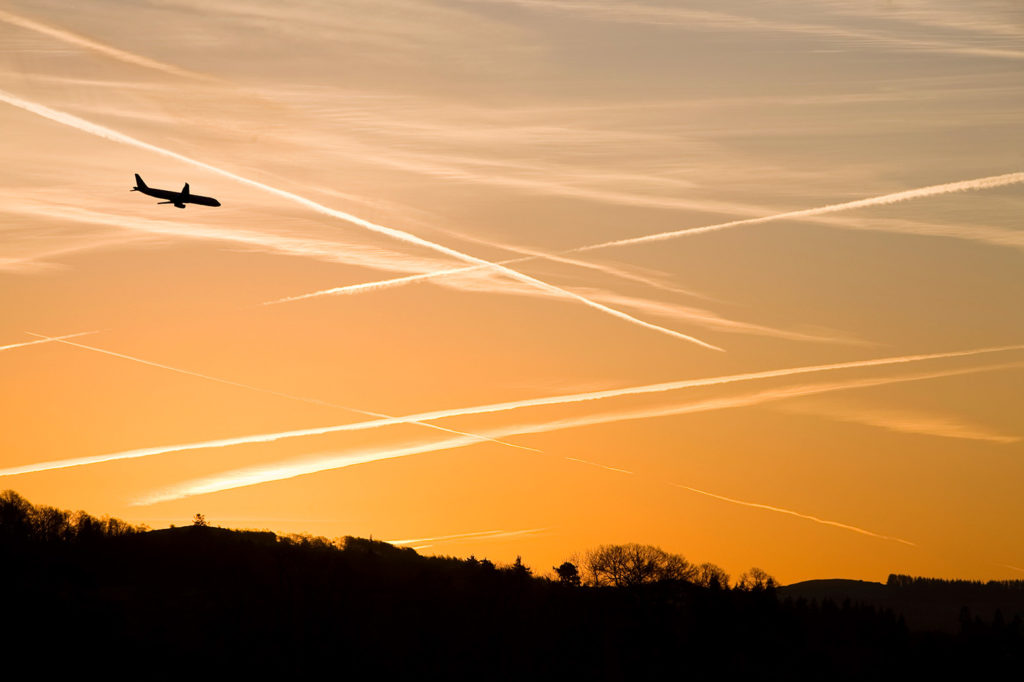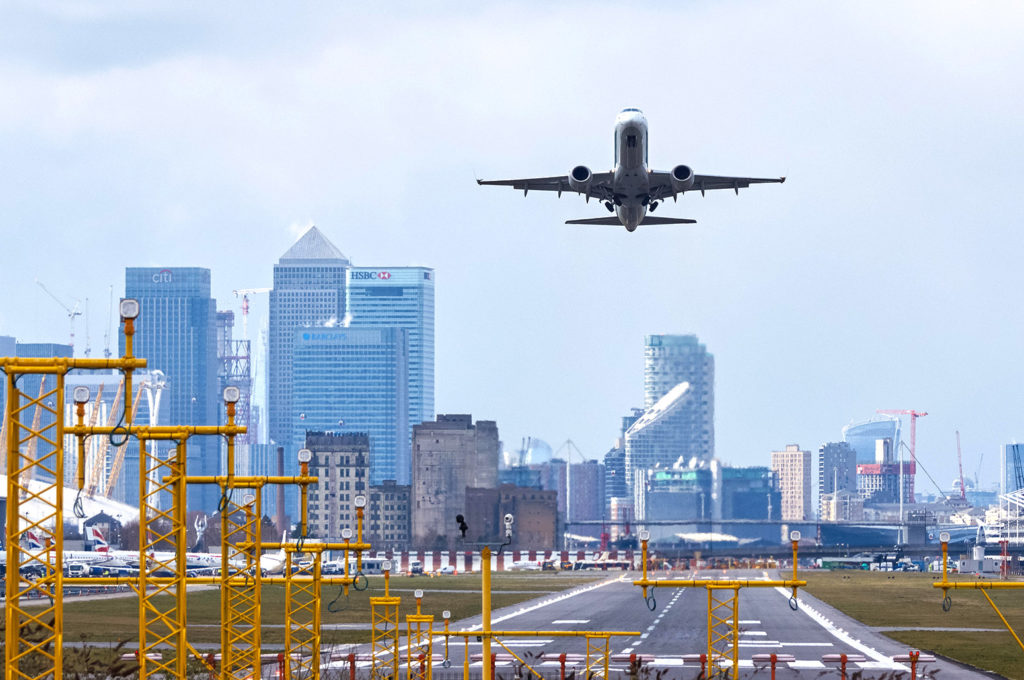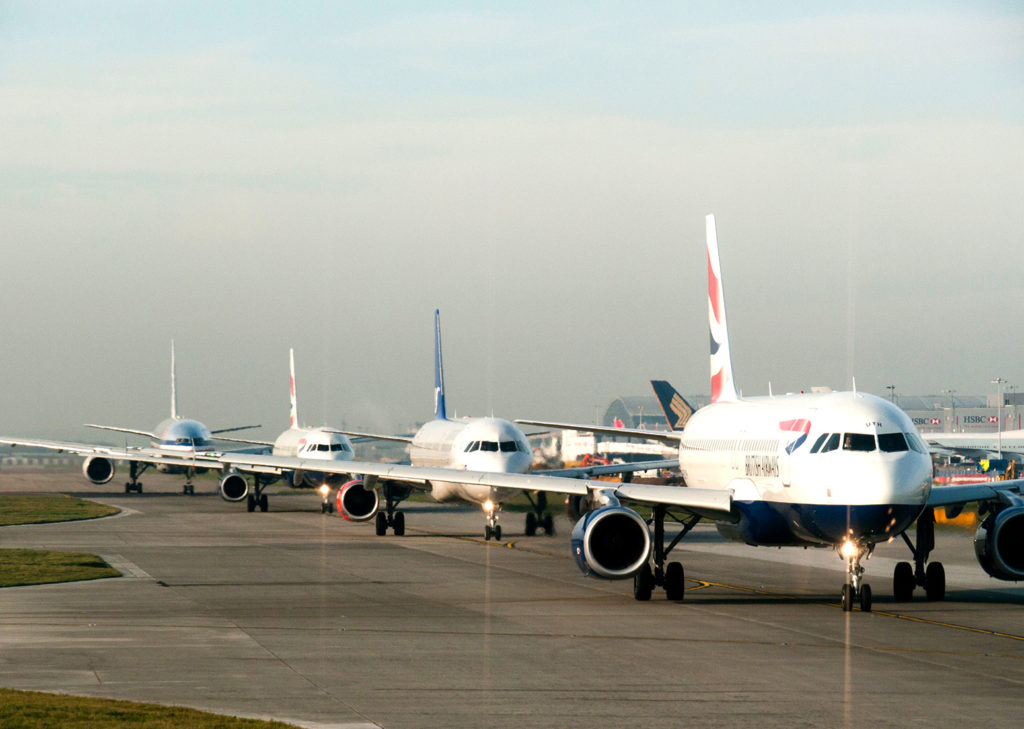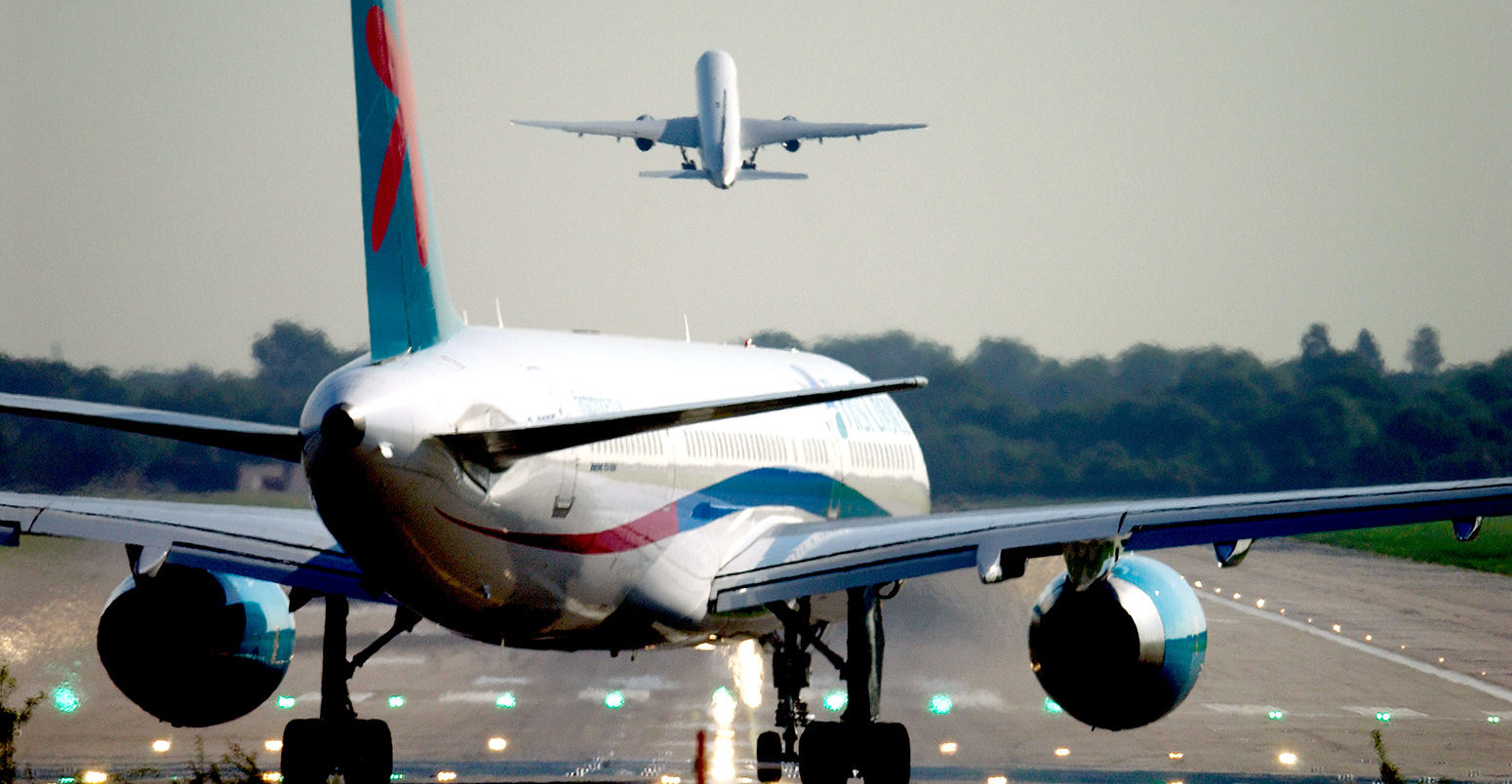
Corsia: The UN’s plan to ‘offset’ growth in aviation emissions
Jocelyn Timperley
02.04.19Jocelyn Timperley
04.02.2019 | 3:46pmAirlines around the world have recently begun to monitor their CO2 emissions as part of a UN climate deal.
Last month marked the first step of the UN’s “Corsia” scheme, which aims to ensure any rise in international aviation emissions above 2020 levels are offset elsewhere.
The scheme was agreed by 192 countries in 2016 through the UN’s aviation agency. It is significant because of the aviation sector’s large and rapidly increasing CO2 emissions. If aviation were a country, it would be the sixth largest in the world, between Japan and Germany.
Carbon Brief takes a look at how Corsia will work and the concerns over how effective it will be.
How much CO2 does aviation emit?
In 2018, domestic and international flights emitted around 895m tonnes of CO2 (MtCO2), which is 2.4% of global energy-related CO2 emissions.
The sector is also growing fast, even though emissions are supposed to decline in line with global climate goals. Aviation emissions have increased by 26% since 2013 alone.
They are expected to continue to grow, with passenger numbers projected to double to 8.2 billion in 2037. Aviation could consume a quarter of the global carbon budget for limiting global temperature rise to 1.5C by 2050, according to analysis published by Carbon Brief in 2016.
Forecasted improvements in aircraft fuel efficiency of around 1-2% per year will not be enough to offset the expected traffic growth of around 5% per year. This means CO2 emissions could grow by between 2.4 and 3.6 times by 2050, depending on efficiency improvements. New technologies, such as supersonic and urban mobility aircrafts, risk increasing emissions even further.
Significantly, these estimates do not account for the impacts of aircraft emissions other than CO2, such as nitrogen oxides (NOx) and soot. These factors are thought to more than double the global warming impact of aviation.
What is the aim of Corsia?
Corsia is a UN deal designed to help the aviation industry reach its “aspirational goal” to make all growth in international flights after 2020 “carbon neutral”.
Domestic aviation emissions are already covered by the Paris Agreement in national pledges. But international flights, which account for around 65% of the aviation industry’s CO2 emissions, are instead covered by UN’s International Civil Aviation Organisation (ICAO). International aviation alone is responsible for around 1.3% of global CO2 emissions, according to ICAO.
Corsia is short for “Carbon Offsetting and Reduction Scheme for International Aviation”. It is a market-based mechanism being developed by ICAO.
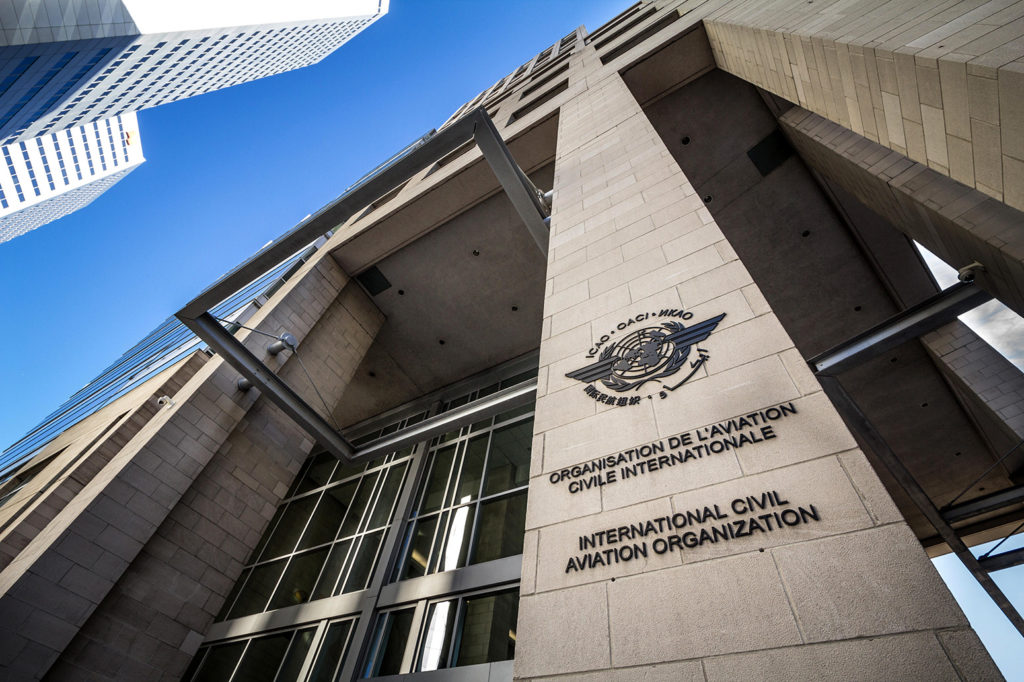
The International Civil Aviation Organization (ICAO) headquarters, Montreal, Canada. Credit: Jerome Cid / Alamy Stock Photo.
Airlines will have to buy emissions reduction offsets from other sectors to compensate for any increase in their own emissions. Alternatively, they can use lower carbon “Corsia eligible” fuels.
Corsia aims to “complement” a broader package of measures to achieve the sector-wide “carbon-neutral growth” goal, such as increasing fuel efficiency and operational improvements.
This goal was first set by ICAO back in 2010. However, the goal has never been recognised as a scientific response to climate challenge, Tim Johnson, director of the Aviation Environment Federation (AEF), tells Carbon Brief. He adds:
“It was only ever a political compromise between countries that already had targets, like Europe, who wanted to make aviation emissions subject to similar levels of obligation, and those, like the developing countries, who, under the Kyoto Protocol, didn’t have any obligations and, therefore, didn’t want anything.
“There’s no scientific data or analysis or anything else behind it, which means from day one when you talk about the Paris Agreement and temperature goals and net-zero emissions, Corsia already looks out of date.”
The aviation offsetting goal has been contrasted by environmental groups with the efforts of the shipping sector, another international, cross-border sectors not covered in national climate pledges under the Paris Agreement.
Last year, flag states at the UN’s shipping agency agreed to a sector-wide goal to reduce absolute emissions 50% by 2050, compared to 2008 levels. This contrasts with the promise from ICAO to only hold aviation emissions at 2020, rather than reduce them.
How will Corsia work?
The Corsia scheme will expand its coverage through a series of steps, shown in the timeline below. An essential precursor to this rollout is emissions monitoring, which started on 1 January 2019.
Corsia timeline. Graphic by Tom Prater for Carbon Brief. Source: Ecosystems Marketplace and ICAOThe scheme will start operating in January 2021, with a voluntary pilot phase that will last to the end of 2023.
All airlines which operate routes between two volunteering states will be subject to the offsetting requirements. This is irrespective of whether the operator is itself based in a non-participating state. Corsia refers to this as the “route-based approach”.
However, the requirements only apply for operators with international emissions above 10,000tCO2 per year. This means most of the world’s private jets are exempt.
As of mid-January, 78 countries representing three-quarters of international flights have volunteered to participate in this initial pilot. This includes the US, Australia, Canada, Saudi Arabia, Japan, the UK and many other EU countries. Notable absences include China, Brazil and India (see below).
Countries taking part in the pilot will then move into the first formal phase of Corsia, running from 2024 until the end of 2026, which is similar to the pilot phase. In these two phases, states can decide to join – or withdraw from – the scheme at the beginning of any year, so long as they have given notice to ICAO by the previous June.
The second phase, from the beginning of 2027 to the end of 2035, is mandatory for all ICAO members, bar those with less than 0.5% of international aviation and some of the world’s poorest countries. Airlines with flights to or from countries entering Corsia at this stage will still need to offset emissions from 2020 levels.
ICAO plans to perform a “special review” by the end of 2032 on whether the scheme should be continued after 2035 and, if so, how it could be improved. Normal reviews assessing the impact of Corsia on the growth of international aviation – and considering if any adjustments to the scheme are needed – are set to take place every three years from 2022.
How will offsetting requirements work?
At the end of each three-year phase, participating airlines will be required to buy offsets for emissions growth above 2020 levels for each of the previous three years.
For example, companies will be required to offset their emissions from the three-year pilot stage by the end of January 2025. They then need to submit a report showing they have done this by April 2025.
Buying an offset, in essence, means buying a credit that has been verified as having reduced emissions elsewhere. Once airlines have bought this offset, they can use it to “cancel” their own emissions. Once cancelled, an offset is removed from “circulation” and cannot be used again.
In the early years of Corsia, the number of offsets each airline will need to buy will depend on the entire global industry’s emissions growth since 2020, rather than any change in that individual company’s CO2 output.
The requirement to offset emissions will be divided among airlines in proportion to the total CO2 emissions of that company, instead of their growth from 2020. This is referred to as the “sectoral” component of Corsia.
This means larger airlines which already have bigger CO2 emissions may initially have to offset a greater share of global emissions growth than they are directly responsible for. This is to allow younger airlines in countries such as China and India – where there has been less historic aviation expansion – time to catch up with more mature markets.
From 2030 onwards, this approach will gradually transition to one based on each airline’s individual rate of growth. From 2030-2032, 20% of offsets will be calculated according to
this “individual” approach, with the remaining 80% calculated by the “sectoral” approach. In 2033-2035, the proportion of offset requirements based on the “individual” approach will increase to 70%.
Where can airlines buy Corsia offsets?
What is – or is not – accepted as an offset for Corsia is crucial to making the scheme credible, say observers.
If offsets are allowed even when they do not result in genuine and additional emissions reduction, then the scope to compensate for growth in the aviation sector will be limited and the scheme will be undermined.
Some of the criteria for offsets have already been developed – for example, that they should cause “no net harm” to people or the environment.
However, there are several key aspects on which countries have struggled to reach agreement. Formation of an actual list of eligible programmes where airlines can buy offsets has been held up by political debates within ICAO.
The first debate concerns the “vintage”, or age, of the offset credits that will be permitted.
Brazil has signalled that all offsets accepted by the United Nations Framework Convention on Climate Change (UNFCCC) should be accepted and argues for no vintage restrictions.
This would include offsets generated by the Clean Development Mechanism (CDM), according to Johnson. This is a controversial market-based offset programme created in response to the Kyoto Protocol. It has been criticised for lacking stringency to ensure that offsets are additional and avoid carbon “leakage”.
Brazil has lots of unused CDMs, notes Johnson, who says “everyone knows that it is in Brazil’s interests” for it to be able to sell these. “So we know that Brazil is looking for a market for something that will otherwise just be a stranded asset really,” he adds.
ICAO has also yet to decide on the exact activities which will be eligible for offsets, such as whether forest credits can be included.
Andrew Murphy, aviation manager at the NGO Transport and Environment (T&E), tells Carbon Brief that it is “extremely unlikely” ICAO will not accept forest credits, which some indigenous leaders say will harm their communities. Other NGOs, such as the Environmental Defence Fund (EDF), support the use of forestry credits.
ICAO is currently in the process of setting up a new committee, known as the Corsia Technical Advisory Body (TAB), which will be tasked with making the final decisions on offset criteria, as well as which schemes can be included. Countries were invited last year to make nominations for the TAB. However, ultimately, ICAO’s council – a political body – will have to approve the rules.
The TAB will also need to take into account the final rules decided on the voluntary market mechanisms of the Paris Agreement, which are still under debate (Article 6) at UN climate negotiations.
The second debate centres on whether the eligibility of certain projects should be decided on by ICAO, or by countries themselves, in a process known as “self-determination”.
China maintains that states should be allowed to apply the offset eligibility criteria established by ICAO themselves. This could mean each country interpreting ICAO’s criteria in different ways. Murphy tells Carbon Brief:
“The reason for China’s scepticism is that, as a point of principal, they don’t want to be told by a UN agency which offsets they have to use for their airlines.”
But airlines argue that this could create a global imbalance, where cheaper offsets are available in some countries compared to others, says Johnson. “They’re really worried about that inequality, that competitive disadvantage.” Most countries also want a central list maintained by ICAO, says Johnson.
China’s name was initially on the list of countries participating in Corsia’s pilot scheme. However, its name was removed last year after it pointed out it had never technically signed up. It now says it has yet to make a decision on whether to join the pilot.
The US and China signed a bilateral agreement in 2016 saying they were committed to a global market-based measure to address international aviation emission. Johnson says it is not clear if China would really withdraw its airlines from a global scheme, or whether it is a “bluff”.
Therefore, it is still uncertain whether Corsia will deliver both high environmental standards and broad coverage across countries. If it does, this “may make Corsia something that’s worth having”, says Johnson.
What are the criticisms of Corsia?
Corsia has been the subject of substantial criticism since it was first agreed in 2016, as well as some optimism.
It can be expected to “modestly reduce” the net climate impact of international aviation up to 2035, according to the International Council on Clean Transportation (ICCT). This is only if high-quality offsets are used and those offsets are not “double counted”, the thinktank adds.
Unless it is extended beyond 2035, Corsia will cover only 6% of projected CO2 emissions from all international aviation between 2015 and 2050, ICCT data indicates. This is shown in the chart below.
Annual and cumulative CO2 emissions from international aviation, 2015 to 2050. This data assumes China will partake from the pilot phase. As the chart shows, base emissions continue to grow under Corsia due to uncovered traffic. Offsetting requirements then increase in 2027 when the Corsia obligations become mandatory for all ICAO members. Source: ICCT 2018The ICCT argues this means Corsia “does not obviate the need for an ICAO long-term climate goal”.
ICAO has also been accused of lacking transparency, with documents difficult, costly or impossible to access by the public or NGOs. The green NGO coalition observing ICAO has long been pushing for a more transparent and open process.
Civil society is “increasingly concerned” about the “almost complete lack of transparency in ICAO”, especially on climate change, Bill Hemmings, director of aviation and shipping at T&E, wrote last year. All ICAO documents are secret, he says, with “swingeing penalties” for those that release them to the public.
EDF, meanwhile, is concerned that the draft rules for “Corsia eligible fuels” will allow airlines to reduce their obligation to buy offsets through the use of fossil-based “lower carbon aviation fuels”.
The rule, which was decided at the last minute and reportedly pushed by Saudi Arabia, means fuels with a 10% or higher reduction in lifecycle emissions compared to standard “Jet A1” can be counted as “clean oil” and eligible for in-sector offsets.
EDF argues this rule “could present a serious stumbling block for Corsia’s overall credibility”.
T&E also says that “weak” draft rules on which aviation biofuels would be eligible will “almost certainly mean” that unsustainable sources, such as palm oil, are accepted. Murphy tells Carbon Brief:
“So Corsia risks becoming a buyer of last resort for some of the worst climate measures out there – directly undercutting national efforts to remove bad offsets and bad biofuels.”
However, decisions on the criteria that these alternative fuels must meet, as well as how much of an emission reduction the airline will get for that fuel use, are yet to be finalised by ICAO.
In addition, Murphy is concerned that Corsia offsets could create a “perverse incentive” which weakens national climate pledges. Offsets sold under Corsia will not be allowed to count towards national emissions reductions, meaning there is a financial incentive to establish weak targets or leave parts of the economy outside of the climate pledges, he says. Murphy adds:
“It’s not just that Corsia is a weak measure – it’s that it’s an actively bad measure, that risks doing more harm than good.”
One recent academic review of both Corsia and the EU’s Emissions Trading System (EU ETS) concluded that these existing international climate policies for aviation “will not deliver any major emission reductions”.
Why are airlines required to monitor their emissions?
The offsetting requirements of Corsia will not begin until 2021, the first year growth in CO2 emissions above 2020 will be seen. However, ICAO has recognised the need to establish an emissions “baseline” from which growth can be measured.
The baseline for emissions growth from January 2021 will be calculated as the average of 2019 and 2020 emissions.
Countries with airlines which undertake international flights have, therefore, been asked to begin monitoring emissions from 1 January 2019, according to rules agreed in June 2018.
Companies operating in all 192 ICAO member countries are required to monitor these emissions, even if they are not participating in the voluntary stages of Corsia.
Will aviation still be covered in the EU ETS?
In 2012, aviation was brought into the EU ETS, which currently includes all flights between and within member states. The EU plans to cap intra-EU aviation emissions at 32% above 1990 levels and compensate for this rise using deeper emissions in other sectors.
Airlines argue that keeping track of their emissions under two separate schemes will be difficult. They say that international flights within the EU should be covered by Corsia alone, coming out of the EU ETS.
But concerns remain over how effective Corsia will be in reducing emissions. Last year, seven European countries, including France and the Netherlands, threatened to withdraw from Corsia if environmental safeguards are weakened. Corsia is an industry attempt to replace the EU ETS with a “weak and uncertain” measure, according to T&E.
The European parliament has also expressed concern about Corsia matching the ambition of including aviation in the EU ETS. One issue it has raised is that Corsia and the EU ETS have different targets set against different types of baseline.
The European Commission will review the emissions impact of joining Corsia once its rules have been finalised. It will also look at how the scheme could be integrated with the EU ETS if it is decided to proceed with both.
Corsia infographic by Tom Prater for Carbon Brief. Source: Ecosystems Marketplace and ICAO
-
Corsia: The UN’s plan to ‘offset’ growth in aviation emissions after 2020
-
Q&A: The UN’s plan to ‘offset’ growth in aviation emissions after 2020


